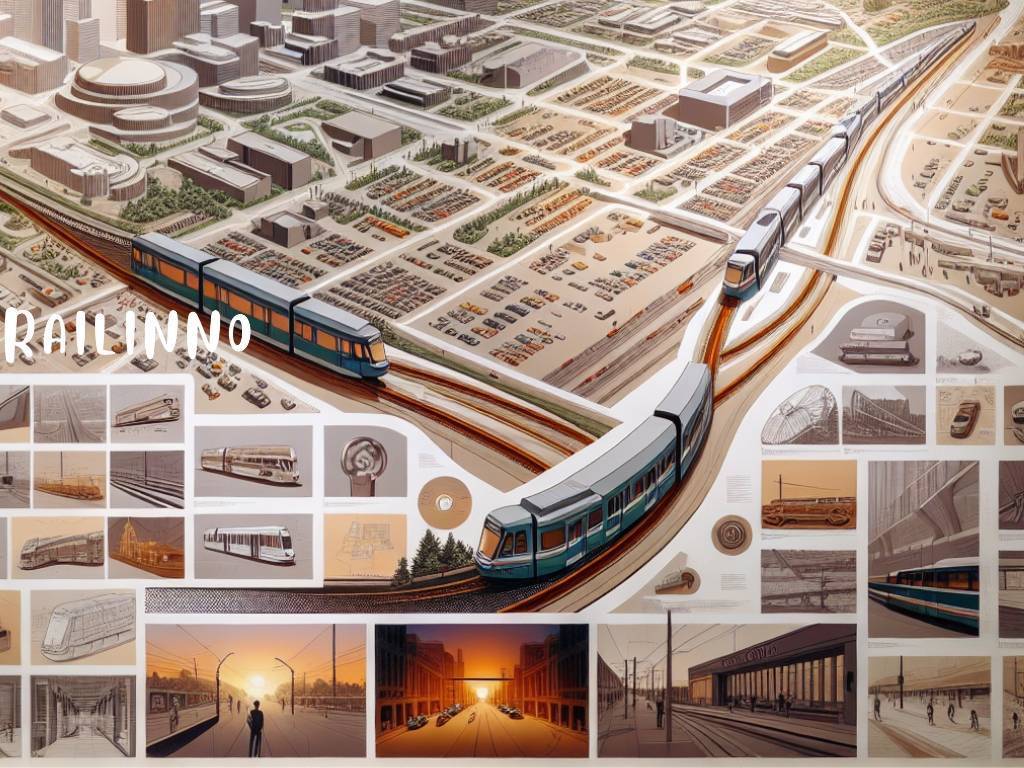Edmonton Radial Railway begins operation with streetcars.
Introduction
Edmonton Light Rail Transit (LRT) system has played a vital role in the city’s transportation network since 1978. As one of the first modern LRT systems in North America, it has expanded from five stations to become an essential transit option. This article explores the LRT’s development, how it integrates with city transit, the challenges it faced, and the future of rail systems in Alberta. As the city plans for growth, the LRT continues to shape the urban landscape.

Early Development of Edmonton’s LRT
Edmonton’s public transit history dates back to 1908 with the Edmonton Radial Railway. In 1978, the city opened its first LRT line, a 7.8-kilometer stretch connecting downtown with the northeast, including Belvedere Station. This made Edmonton the first city in North America with a population under one million to establish an LRT system. This initial success led to further expansions, including the extensions to Clareview and Corona in the early 1980s.
However, by the mid-1980s, further growth slowed due to economic downturns and logistical issues, such as challenges in crossing the North Saskatchewan River. These obstacles forced city planners to rethink strategies, leading to delays in southward expansion.
Integration with Edmonton’s Transit Network
From the start, the LRT connected with Edmonton’s broader public transit network. A hub-and-spoke model allowed buses to feed passengers from residential areas into transit centers. At these hubs, commuters could transfer easily to the LRT. The system also incorporated park-and-ride lots at several stations, making it more accessible to suburban residents. This integration increased ridership, growing from 12,000 passengers per day in 1978 to over 36,000 today.
The extension to the University of Alberta in 1992 proved a significant boost. The student population helped drive a 50% increase in daily ridership, showing the LRT’s importance in commuting.
LRT Operations and Technology
Edmonton’s LRT fleet includes 37 Frankfurt U2-type light rail vehicles (LRVs), known for their durability. Each vehicle undergoes major inspections every 750,000 kilometers and regular checks every 10,000 kilometers. The signal system combines European and North American technology to ensure efficient, safe operations.
Edmonton’s harsh climate presents challenges for maintaining tracks and the traction system. Winter conditions often affect performance, but ongoing improvements in design have minimized issues. Regular maintenance and updates ensure smooth operation year-round.
Economic and Environmental Impact
The LRT system operates efficiently, with unit operating costs reduced to $1.04 per passenger journey. Though maintaining underground stations costs more, overall efficiency helps balance the budget. The system operates with a combination of farebox revenue, local property tax, and government grants.
As the city grows, the LRT plays a crucial role in environmental sustainability. It helps reduce reliance on cars, which cuts emissions and energy consumption. With Edmonton’s population expected to surpass 1.15 million by 2040, the LRT remains a central part of the city’s sustainability plans.
Challenges and Lessons Learned
Over the years, Edmonton’s LRT faced several challenges, including infrastructure maintenance. Common issues include water leakage and escalator malfunctions, particularly in underground stations. These problems have required significant investments in repairs and upgrades.
Moreover, the expected land development along LRT corridors has been slower than anticipated. Clareview Station, for instance, sits next to undeveloped land, mostly serving as a park-and-ride lot. This situation highlights the complexities of transit-oriented development (TOD). Edmonton’s TOD guidelines are now pushing for denser development around LRT stations to optimize urban growth.
The Future of Rail Transit in Alberta
Edmonton’s LRT expansion will be vital as the city grows. Planned extensions aim to connect all quadrants, with routes to Southgate Transit Center and West Edmonton Mall as priorities. These expansions are essential as demand for public transportation increases.
Looking further ahead, regional rail systems could link Edmonton and Calgary. This high-speed rail connection would reduce travel times and cut emissions. Such projects are becoming more critical as Alberta looks to manage urban growth sustainably and reduce traffic congestion.
Conclusion
Edmonton’s LRT system demonstrates how effective public transit can shape urban development. It started as a small network but has grown into an integral part of the city’s infrastructure. The LRT has increased efficiency, reduced emissions, and supported Edmonton’s transit needs for over four decades. Ongoing expansions and improvements will ensure the LRT continues to serve as a key player in Alberta’s transportation future.
Edmonton Light Rail Transit Timeline
Edmonton Light Rail Transit Timeline
First motor bus service introduced.
Radial Railway reaches peak with 74 streetcars and 54 route-miles.
Electric trolley bus service commences.
Edmonton's population stands at 160,000.
Edmonton's population reaches 451,000. City planning plays an active role in managing growth and development.
Edmonton opens its first LRT line, becoming the first North American city with a population under one million to have a modern LRT system. The initial phase features five stations and 14 LRVs.
LRT surface extension completed.
2.5-km extension to the University of Alberta completed.
Metro Line opens, expanding service to new areas of Edmonton.
Valley Line construction continues, with the first phase (Southeast) expected to open soon. Future planning for extensions and new lines is ongoing.